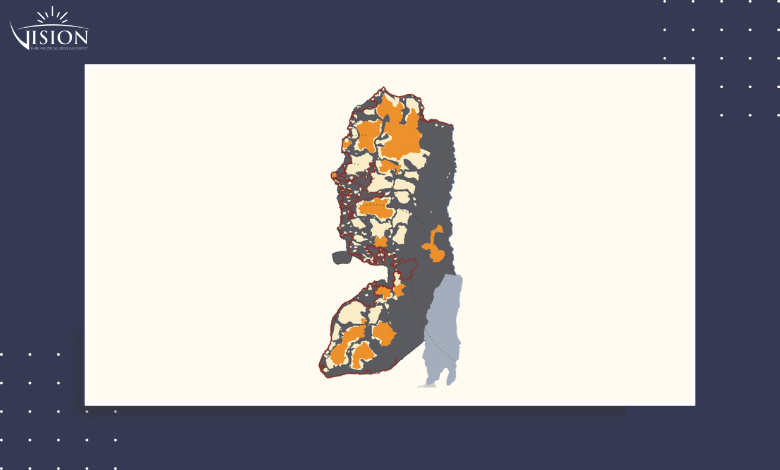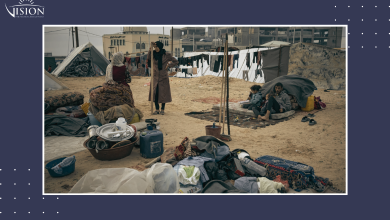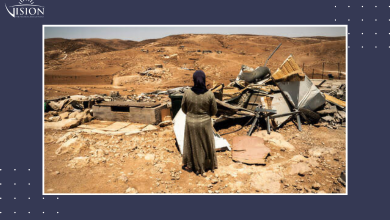“The Emirates Solution”: A Blueprint for Dismantling the Palestinian Cause

A recent media controversy has erupted over what has been described as an “unconventional” initiative dubbed the “Emirates Solution” or the “Tribal Plan.” At its core, the plan rests on an orientalist assumption that Palestinian society—particularly in the West Bank—is structured around tribal frameworks that can be mobilized to establish localized self-governing entities, effectively bypassing the need for a modern, unified Palestinian state.
Proponents of the plan present it as a pragmatic alternative aimed at resolving the Palestinian issue in a way that ultimately favours Israeli interests. However, Palestinians largely view it as a rebranded version of the discredited “Village Leagues” of the past—a strategy to fragment national identity into a patchwork of tribal enclaves, each confined to isolated cantons.
The UAE’s proposal seeks to institutionalize an “economic peace” built on traditional social structures. Yet beneath this surface lies a deliberate architecture of fragmentation—one that further isolates Palestinian cities from one another and dismantles the national project in favour of fluid tribal and regional identities. At its core, the plan aligns with Israel’s strategic goal: comprehensive security control and the neutralization of any genuine Palestinian political aspirations.
While a handful of tribal notables in Hebron have welcomed the plan, the broader response is one of widespread rejection. The obstacles are far from trivial. A solution based on family-run cantons or micro-emirates stands in stark contradiction to decades of Palestinian national struggle. It offers not relief, but a rebranded continuation of long-standing suffering—colonial in form, however freshly dressed. Yet history has shown that the fabrics of colonialism, no matter how finely woven, have always been torn apart by the will to be free.
The Birth of an Idea: From Theory to Strategy
The roots of the so-called “UAE Solution” trace back to 2012, when Israeli orientalist and Bar-Ilan University professor Mordechai Kedar proposed the establishment of eight Palestinian emirates in the West Bank and Gaza Strip. Kedar’s vision centered on tribal and clan structures in major Palestinian cities such as Hebron, Nablus, Jenin, Tulkarem, Qalqilya, Ramallah, and Jericho.
His argument hinged on the claim that the failure of modern, centralized states in parts of the Arab world—like Syria, Iraq, Libya, and Yemen—was due to a lack of tribal cohesion. In contrast, he pointed to the relative stability and prosperity of Gulf monarchies, which operate within tribal frameworks, as a model to emulate.
The stated goal of this plan is to grant several Palestinian cities full autonomy—managing their own economy, education, judiciary, and more. Meanwhile, the rural areas separating these cities—considered sparsely populated by Kedar—would be annexed to Israel, with Palestinian residents there receiving either citizenship or permanent residency.
Under this model, Palestinians would be confined to isolated enclaves with internal self-rule, while Israel would assume responsibility for securing and ensuring movement between them—ostensibly “protecting” them from “external threats,” as Kedar describes it.
Hebron: The First Testing Ground
Mordechai Kedar identified Hebron as the ideal starting point for implementing the plan, citing its deeply conservative society and powerful tribal structure—featuring clans like the Jaabari, Abu Sneineh, Qawasmeh, and Tamimi.
Over the past several years, quiet contacts have been initiated, led by Nir Barkat—Israel’s former Jerusalem mayor and a minister in Netanyahu’s government. Barkat reportedly hosted tribal leaders from Hebron to discuss the creation of an “independent emirate” that would sever ties with the Palestinian Authority and pledge “full peace and recognition of Israel as a Jewish state.”
In recent months, these contacts have intensified, culminating in a formal letter signed on March 24, 2024, by prominent tribal figures in Hebron—led by Sheikh Wadi’ al-Jaabari—addressed directly to the Israeli government. In the letter, the signatories pledged to renounce violence unequivocally and expressed readiness to establish formal relations with Israel based on recognition of its Jewish identity and alignment with the Abraham Accords.
In return, they called for Hebron to be separated from the Palestinian Authority and granted the status of an “emirate”—a self-governing entity operating outside the political framework of the PLO and the centralized authority in Ramallah. According to some reports, al-Jaabari has held more than with Nir Barkat to advance the initiative.
The signatories grounded their position in a narrative that frames the Palestinian Authority as a failed institution—corrupt, weak, and incapable of protecting citizens from settler violence or economic collapse. They argue that the proposed step would bring immediate economic revitalization, with some even envisioning Hebron transformed into a prosperous city “like Dubai.”
Some voices have been blunt: “No one respects the Palestinian Authority, and no one wants it,” they say. As part of their proposal, they’ve outlined mechanisms for cooperation with Israel, including the employment of thousands of Hebron workers in Israeli sectors. In return, the proposed emirate would commit—under tribal oversight—to monitoring security movements and preventing any acts of resistance from being launched from its territory.
Are the “Emirates” a New Form of “Bantustan”?
To many Palestinians, the so-called “UAE Solution” echoes dangerous precedents. In the 1980s, Israel attempted to establish the “Village Leagues”—locally appointed leaderships meant to bypass the Palestine Liberation Organization (PLO) and serve under Israeli oversight. That effort was met with fierce, organized resistance during the First Intifada and was eventually buried—replaced in part by the Oslo Accords.
Today, the “Tribal Plan” is widely seen as a rebranded version of a destabilizing strategy: a calculated attempt to fragment and divide Palestinian society under the guise of local autonomy. Critics argue it is little more than an updated incarnation of the discredited “Village Leagues” of the 1980s—this time wrapped in tribal rhetoric and propped up by a promise of economic perks.
More ominously, many compare the plan to the Bantustan system of apartheid-era South Africa. There, the white minority regime carved out nominally “independent” homelands for Black South Africans—territories stripped of real sovereignty, isolated by design, and governed by client elites. These Bantustans served one purpose: to give the illusion of self-rule while entrenching racial domination and denying any claim to full citizenship or national rights.
The “Emirates Plan” follows a disturbingly similar logic. Though fronted by local figures and couched in promises of prosperity, it remains ultimately controlled—politically, economically, and militarily—by the Israeli state. It offers not liberation, but confinement. Not empowerment, but managed fragmentation. For many Palestinians, it is a transparent effort to replace the dream of national self-determination with a patchwork of isolated tribal entities—engineered to collapse the collective struggle into a series of local bargains.
Fragmentation as Strategy: The Illusion of Tribal Alternatives
This vision reflects a deeply held Palestinian conviction: that national consciousness is rooted in a shared fate—across the West Bank, Gaza, Jerusalem, and the diaspora. Any attempt to fragment that unity risks derailing the liberation project, replacing it with a patchwork of hyper-local alliances—a scenario critics describe as a “tribal archipelago.”
In this context, empowering tribal structures is seen not as a realistic alternative to the Palestinian national project, but as a recipe for deeper internal conflict. Family rivalries, sectarian divisions, and regional loyalties could easily spark infighting more destructive than anything imposed from the outside. The establishment of a single tribal “emirate” in Hebron, for example, might trigger competing responses in Nablus or Jenin—some seeking to replicate it, others fiercely opposing it—dragging the Palestinian cause into a spiral of self-inflicted exhaustion.
Palestinian nationalists often refer to such schemes as the creation of a “proxy authority”—a local substitute for national aspirations that serves, in effect, as an agent of the occupation. These proxies enact a model of “security neoliberalism”—where governance is structurally normalized around dependency on Israel. This form of normalization embeds Israeli control into the fabric of daily governance within these proposed “emirates,” creating a permanent state of economic and security subservience. In essence, tribes become local enforcers of Israeli interests—bound to that role through financial incentives and commercial privileges.
Are “Promises of Prosperity” Enough?
Supporters of the proposed “emirate” in Hebron—though few—are promoting a package of “economic gains” aimed at appealing to specific segments of society: businesspeople, the unemployed, and youth seeking a way forward. One tribal leader remarked, “If we secure American blessing, Hebron could become another Dubai.”
These proponents lean heavily on Israeli promises: up to 50,000 work permits, industrial and agricultural incentives, and the potential creation of a joint economic zone. The allure targets communities worn down by years of economic decline, youth unemployment, and the suffocating effects of occupation and political paralysis in the West Bank.
Yet, critics argue that such promises are a trojan horse—designed to pacify a desperate population and buy silence in exchange for surrendering national aspirations—trading sovereignty for short-term relief.
Betting on the “Trump Moment”
Promoters of the “Emirates Solution” understand that their project cannot succeed without full Israeli sponsorship and strong U.S. backing. They are clearly banking on what might be called a “Trump moment”—a political climate in which a future Trump administration would embrace a liquidationist stance that dismisses Palestinian statehood entirely, while aligning closely with Israel’s broader vision.
Such a moment, they believe, could unlock international funding and media platforms to legitimize and market the plan. With the UAE, Bahrain, and Morocco already signed onto the Abraham Accords, advocates see fertile ground for inserting a new tribal Palestinian entity—anchored in Hebron—under the same normalization banner.
Tribal Rule Without Popular Mandate
While some may believe conditions are ripe for launching the so-called “Emirates Project,” a deeper look reveals far more formidable obstacles. The mere existence of tribal structures does not equate to a popular mandate—certainly not one capable of replacing the national project that the vast majority of Palestinians still see as the only viable path to liberation and an end to occupation.
Tribal influence—whether social or security-based—does not negate core Palestinian principles. And while criticism of the Palestinian Authority is widespread, it does not justify backroom deals that bypass the Palestinian political spectrum, its factions, and its collective aspirations.
A Familiar Mirage
History offers no shortage of cautionary tales about false colonial promises—Oslo being a recent and painful example. Economic incentives often take the form of a bait; a carrot dangling from a string. Even when job opportunities are discussed, control remains firmly in Israeli hands—subject to sudden retraction, breach of agreements, and the whims of political leverage. Under an increasingly right-wing Israeli leadership, any supposed benefits could be revoked at a moment’s notice.
What Israel is offering, critics warn, is little more than a temporary rentier economy—a form of sedation meant to extract lasting political and security concessions in return for fleeting economic relief. Far from leading to prosperity, the proposed “emirate” risks reinforcing fragmentation: it would require setting new administrative and military boundaries, likely creating “sovereignty checkpoints” between neighbouring Palestinian cities, further choking off trade and movement.
Moreover, such a body would lack broad international recognition—leaving it vulnerable, economically isolated, and too risky for serious investment. In the end, the plan is seen by many as a tool for entrenching Israeli colonial ambitions under the guise of local autonomy, while stripping Palestinians of their political agency in exchange for precarious privileges.
Conclusion: A Pathway to Fragmentation, Not Peace
In the end, the “Emirates Solution” poses a deeply dangerous mix of threats to the Palestinian condition. Far from offering a magical formula for peace and prosperity, it opens the door to heightened internal tensions—an intensification of division atop division—and entrenches chaos rather than resolving it.
Given the current balance of power, the plan is unlikely to advance smoothly, and may never succeed at all—unless Palestinians are forced into it, cornered by crushing political, economic, and security breakdowns that exceed any population’s capacity to resist. If such a scenario materializes, it could trigger unpredictable and far-reaching consequences.
Ultimately, breaking the land into fragmented tribal enclaves—reminiscent of the Bantustans of apartheid South Africa—would not bring stability. These pseudo-autonomous zones were designed not to empower, but to isolate and control, denying any real sovereignty while preserving the dominance of the occupying power. Replacing national identity with tribal allegiance serves the same purpose: managing Palestinians through division, not liberation. The more fractured the landscape becomes, the more explosive the eventual reckoning is likely to be.
The “Emirates Solution” is not a roadmap for peace—it is a demolition order for the Palestinian cause, a blueprint for national fragmentation in the guise of prosperity, shrouded in tribal deception, and sold as economic salvation.
NOTE: This text is adapted from original Arabic article.





